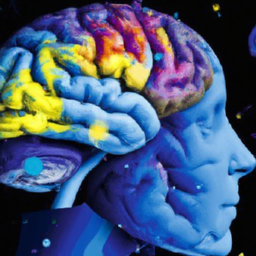The Role of Neuromarketing in Understanding Consumer Behavior
As consumers, our decision-making process is often complex and influenced by various factors. From catchy advertisements to consumer reviews, there are many variables that can sway our choices. Neuromarketing is a relatively new field that seeks to understand consumer behavior at a deeper level by studying the brain’s response to marketing stimuli.
What is Neuromarketing?
Neuromarketing combines neuroscience, psychology, and marketing to uncover the subconscious drivers of consumer behavior. It explores how our brains respond to marketing messages, packaging, pricing, and other stimuli, with the goal of understanding why certain marketing strategies are more effective than others.
Instead of relying solely on surveys and focus groups, neuromarketing utilizes advanced technologies like functional magnetic resonance imaging (fMRI), electroencephalography (EEG), and eye-tracking to measure and analyze brain activity. By doing so, it provides valuable insights into how consumers perceive, process, and react to various marketing elements.
Implications for Understanding Consumer Behavior
Neuromarketing offers several valuable implications for understanding consumer behavior:
1. Uncovering Subconscious Influences
A significant portion of our decision-making process happens subconsciously. Traditional market research methods often fail to capture these subconscious influences. However, through neuroimaging techniques, neuromarketing can reveal how specific marketing stimuli affect our emotions, memories, and associations at a deep level. By uncovering these subconscious influences, marketers can tailor their strategies to better resonate with consumers.
2. Enhancing Advertising Effectiveness
Advertising is a multi-billion dollar industry, but not all advertisements are created equal. Neuromarketing can help marketers optimize their advertising campaigns by understanding which elements of an ad evoke the strongest emotional responses or capture attention the most effectively. By pinpointing these elements, marketers can create more impactful and persuasive ads that resonate with their target audience.
3. Improving Product Packaging and Design
The way a product is packaged and presented to consumers can significantly impact their decision to purchase. Neuromarketing can help identify which aspects of a packaging design, such as colors, shapes, and text, resonate most with consumers’ subconscious preferences. This knowledge can guide marketers in designing packaging that stands out on the shelves and creates a positive emotional and sensory experience for consumers.
4. Optimizing Pricing Strategies
Pricing is a crucial factor in consumer decision-making. Neuromarketing can shed light on how our brains perceive and process different price points. For example, research has shown that our brains respond differently to seeing discounted prices versus the actual amount we save. By understanding these cognitive biases, marketers can optimize their pricing strategies to influence consumer perceptions and increase sales.
Conclusion
Neuromarketing has the potential to revolutionize how marketers understand and influence consumer behavior. By delving into the subconscious drivers of our decision-making process, this field provides invaluable insights that can inform more effective marketing strategies. As our understanding of the human brain continues to evolve, so too will the role of neuromarketing in shaping the future of consumer behavior.











